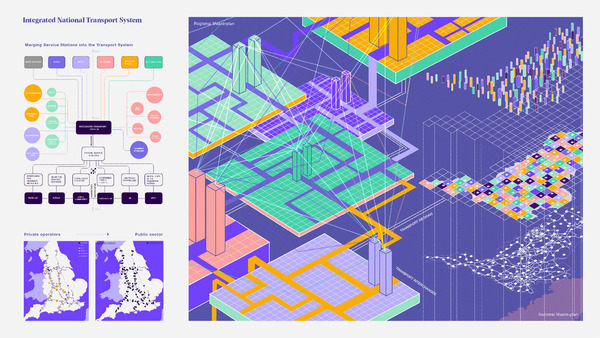An Interchange for Socially Responsible Seamless Future Mobilities
Service stations have been an essential part of the road network for more than 50 years but the principles of their design have changed little. With the growing use of alternative fuel sources, emerging technologies, and increased integration between transport modes, what does the service station of the future look like and how will it perform?
To answer the atelier question, my project looks at the current transport system and future visions of mobility to construct a speculative context for future services. After identifying prevailing issues, a new form of mobility has been proposed. A fully integrated and centrally controlled transport network, reflecting the ongoing research into smart systems, however, bringing it into the public sector. Could mobility become a right while operating without overshooting the ecological ceiling? Are electrification, automation, and digital integration the way forward?
The building represents a prototype for the supporting infrastructure servicing the future transport system. Service stations become transport hubs where the physical and digital flows of the network meet and exchange while providing communication between regional and national scales. The project investigates the complexity and spatial aspects of a hyper-connected scheme, and the social implications of automated and AI-driven reality. The structure is designed to provide easy adaptability for ongoing innovations and to expose operational processes and data to the public.


